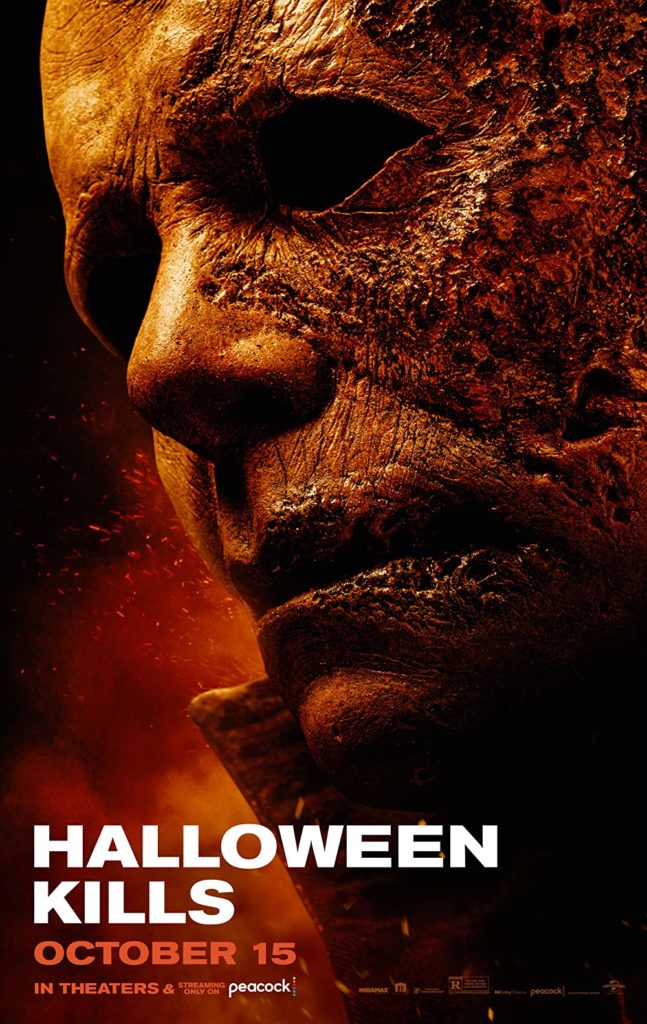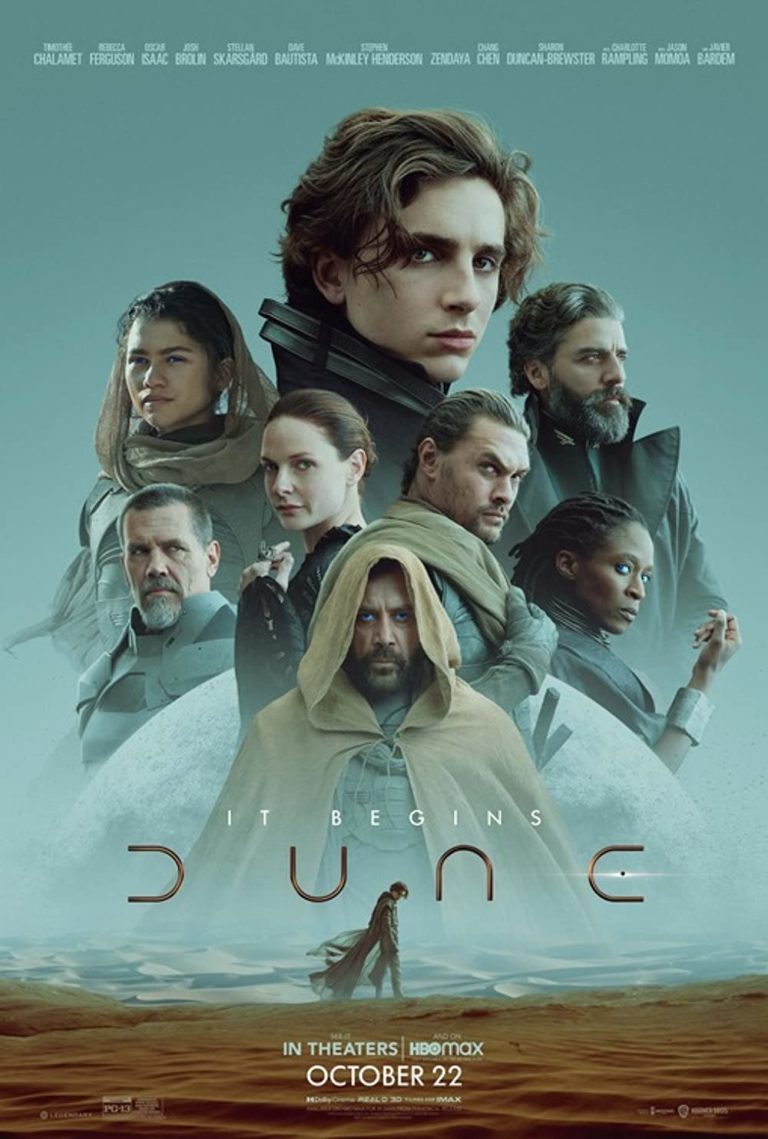Michael Myers is a force not to reckon with in the latest installment of the Halloween franchise, Halloween Kills. To say the film doesn’t live up to its title would be doing the film a disservice. It delivers on seeing the brutal instincts that Michael Myers carries with him as he stalks the shadows of Haddonfield. Some of the kills are in the trailer, but they’re not the highlights of how morbid and gruesome his killing spree gets. Is the film promising in that regard? Most certainly.
Halloween Kills picks up right after the events in David Gordon Green’s Halloween (2018), where it’s still very much Halloween night, and kids are out trick-or-treating, oblivious to the carnage presented in the first sequel. The news hasn’t broken yet that Michael Myers is on the loose and picking off innocent bystanders one by one. We see familiar characters from John Carpenter’s Halloween (1978). Tommy Doyle, Lindsey Wallace, and Marion Chambers. With a flashback to the initial night of terror in 1978, the film also introduces a character, Lonnie Elam, who, too, survived an encounter with Michael Myers when he was a kid. All four characters reminisce at a bar about The Shape being taken into custody 40 years prior.
Meanwhile, Laurie Strode is in a hospital from injuries caused by Michael Myers after their latest confrontation. Laurie, alongside her daughter and granddaughter, Karen and Allyson, believe Michael is dead after they trapped him in Laurie’s basement and set the place aflame. But what would a Halloween movie be if Michael Myers didn’t somehow survive the impossible? When we first see Michael Myers in action, it’s brutal. There is no remorse behind his actions. He’s angry, he’s vengeful, and most of all is bloodthirsty. When word gets out that he’s still alive, Tommy Doyle and company decide to take the matter into their own hands and get a mob together to kill Michael Myers once and for all while chanting: “Evil dies tonight!”
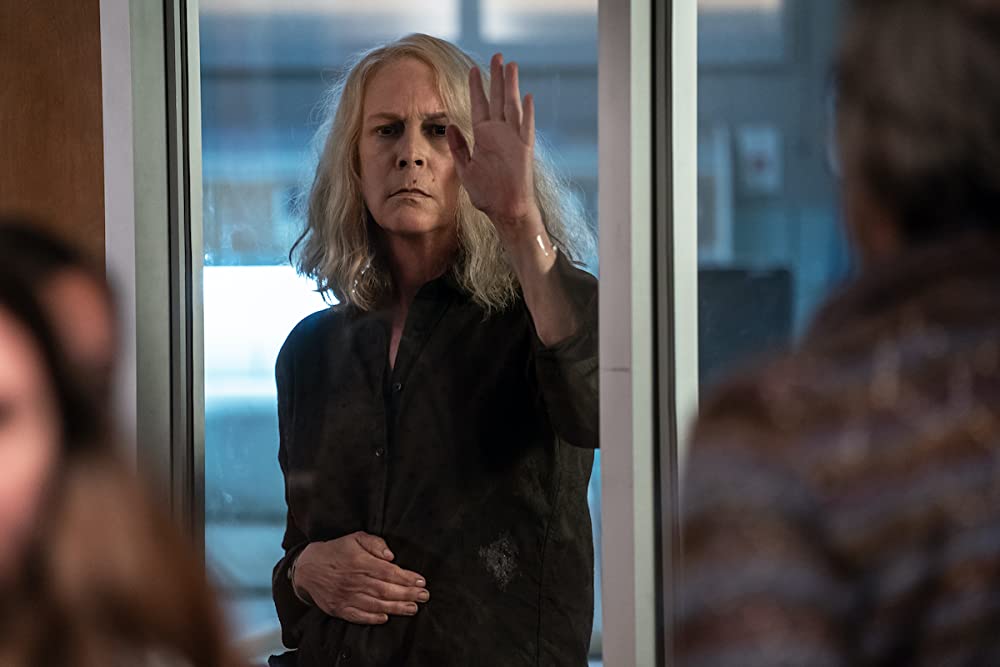
I had to watch the film twice to understand how I felt about it. Already Twitter is going haywire with either loving the flick or hating it. The discourse around it reminds me that of The Last Jedi. And to be honest, my first viewing of it in a packed theater left an unfamiliar taste in my mouth. I was shocked at how much distaste I had for what I was seeing. My initial thoughts after my first screening were that it is bloated with misdirection, and it deprives us of any hope that we desperately need today. The audience in the theater laughed, they cringed, and they whispered with their disappointment by the time the credits rolled. I walked out scratching my head and discussed it while standing outside the theater with my buddy. On the drive home, I couldn’t stop thinking about it. I felt so split on whether I liked it or hated it. I felt like I needed to rewatch it to fully understand why I was feeling so mixed on it. Sure, it’s perfectly fine to have a mixed reaction to a film. But more often, it’s pretty cut and dry what worked for it and what didn’t. I couldn’t nail down those exact things from my first viewing.
It wasn’t until I saw a fellow acquaintance on Twitter recommend that people give it another chance. I decided I needed to sit down and watch it again. And you know what? I’d second others do the same thing – especially if they are die-hard fans of the Halloween franchise. The one takeaway I got from both viewings is this: Halloween Kills is mean. It doesn’t give a shit about any endearment your nostalgia holds with the lore surrounding Myers himself. It exists only to show you one thing and one thing only – Evil will always exist no matter how much you wish to eradicate it from existence. That thought alone is terrifying. And that’s where Halloween Kills benefits from taking a risk to explore a bigger picture.
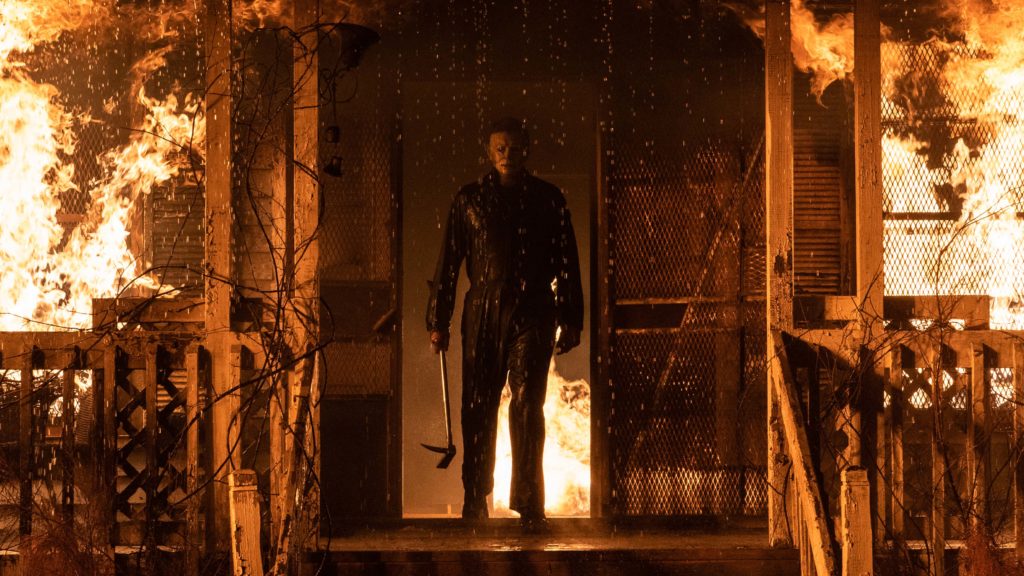
On my initial viewing, I was expecting the story to continue from Laurie Strode’s perspective. I mean, after all, that’s what happened in the 2018 predecessor. Halloween Kills flips perspectives and, we view things from the myth himself. We see the effects his very existence causes on those who live in Haddonfield. Halloween Kills is not about following the typical hero arc. It’s the antithesis to that. Its purpose is to deface everything we were taught to believe about the franchise. Laurie Strode, the heroine and arguably main protagonist throughout a majority of the franchise to an extent, has taught us that Michael Myers haunts us around every corner. We were to believe that had we crossed paths with Michael Myers and somehow survived, he would find where we lived and lurk in the shadows until the opportunity was perfect for him to strike, that he held grudges and vowed to seek revenge on anybody who tried to stop him. What the new trilogy showcases is that having the belief only blindsides us from a bigger picture. Michael Myers does not hold a vendetta against one particular person; he has a vendetta against anybody and anything that stands in his way to shed blood. That’s it. What Halloween Kills exemplifies is not only the ugliness that resides in all of us, but that nobody is truly safe from the presence of Evil itself.
The most jarring thing for me when I initially sat in the theater was the usage of characters from the previous films. At first, I blamed the writing that did them no justice at all because I was in the mindset that Laurie Strode and the townspeople would be the ones we’d be following throughout the movie. I never pictured little Tommy Doyle and Lindsey Wallace being the main event organizers to rally others to fight against The Shape. On paper, it sounds badass. It sounds like a petition that hardcore fans can get behind and all yell in support to take down the very thing that caused mayhem 40 years prior. But their presence and impact felt underwhelming for what I expected. The most frustrating thing about all the characters in this movie is how blisteringly stupid they are. Fans of slashers may think, “Well, what do you expect from a slasher?”; and as a fan myself, I expected characters brought back from the original film to be handled with care. To have such an expectation will set you up for disappointment in this film.
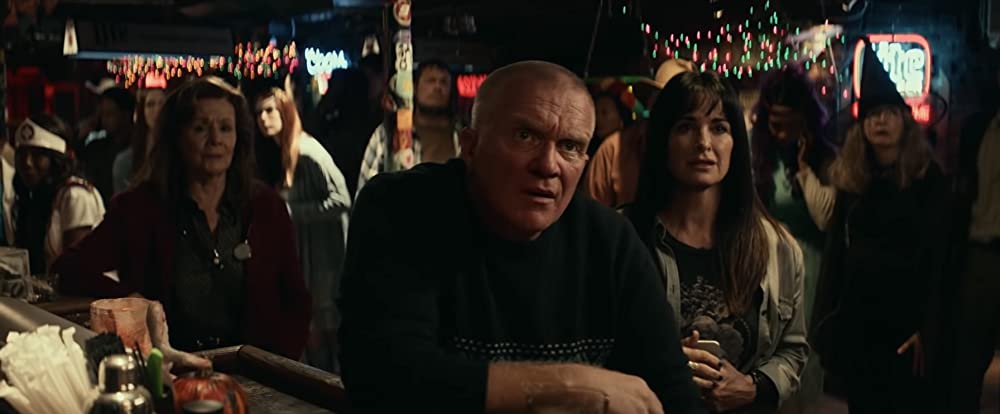
The writing isn’t the greatest—in fact, it may be my main criticism upon both viewings of the film—but I got the idea of what they were trying to achieve on my second go-around with the flick. Although the mob aspect is wonky at best and the message of their actions at the end of the film is a convoluted mess, I realized their presence is only a direct reflection of Michael Myers himself. Both are on the extreme opposite sides of good vs. evil, and both have dire consequences for their actions, which one could argue that the mob in the film is just as vile and guilty as Michael Myers making them one of the same. And for the filmmakers to take that approach is pretty bold. Especially when a majority of those watching will want to try and see things through the mobs’ perspective since they’re characters we have seen before. It feels like the filmmakers put us in front of a mirror and asked, “Do you really want to follow these people?” And for as incredibly dense as the characters are throughout the film, David Gordon Green counterbalances that with giving us some of Michael Myers’ best kills yet in rather satisfying ways (God, that feels morbid to type out).
Throughout Halloween Kills’ runtime, they talk about the lore of Michael Myers, which is some pretty fun world-building in the universe since Halloween (2018) only set up a portion of who Michael Myers is. As mentioned earlier, there’s a flashback sequence that should win over any Halloween fan with the help of a cameo. And if you push past the curtain of clunky dialogue, the core of what they’re trying to do is set a precedence that Michael Myers is something more than just a psychopathic serial killer. David Gordon Green slowly sets up the main driving force behind Michael Myers and the folk of Haddonfield on Halloween night 40 years later; how knowing his very existence can instill paranoia and fear of the unknown. It extends past the Strode family. To me, that’s interesting. The fact the whole town resorts to tribalism to eradicate evil itself is all too real given the circumstances of our day and age.
Whereas Halloween (2018) had the spotlight on Laurie Strode and the effects that Michael Myers had on her family, Halloween Kills gives more weight to Michael than the Strodes. It ignores essentially any character development with them until the third act. Though there are bits of badassery and bravery from the Strode family, it’s not enough to act as a cherry on top of 2018. But going in and expecting to see them in action is where a lot of my disappointment came in from my first viewing. I was thrown off by how much of the focus was purely on Myers. Going in it with the mindset that Halloween (2018) was Laurie Strode’s story and that Halloween Kills is Michael Myers helped me appreciate more of the uneven balance I felt from my first viewing. There are plenty of actions throughout Halloween Kills that exemplify just that. Michael Myers is out to play and have fun, however dark and morbid as that may sound.
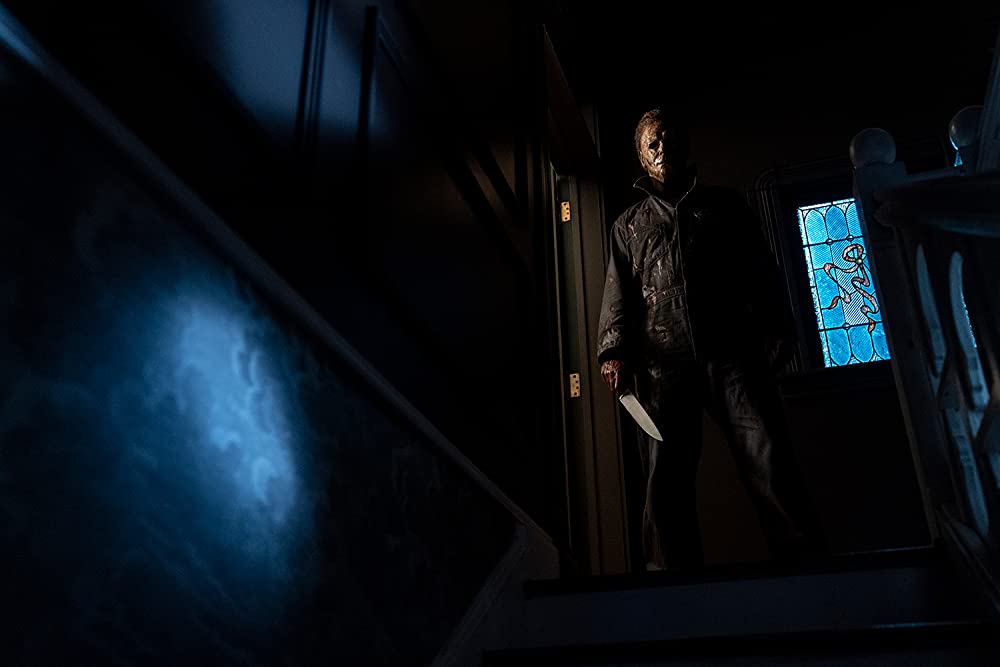
I’ve heard some say it’s cheesy and campy. It may very well be just that (yes, the writing is that bad), but this is also the first sequel (excluding 2018’s because that was also a reboot in the same vein) that I was able to experience in a theater with Michael Myers on the big screen. To hear the audience laugh and scream at parts in the theater made me also appreciate more elements of Halloween Kills. I couldn’t help but ask myself if that was a similar experience to the sequels that came out in the 80s and 90s. Where I cheered and laughed (albeit at some random parts that were probably supposed to be serious), others followed suit. And on my second viewing of it, I found myself clapping in the third act with John Carpenter’s score and a final showdown.
At its best, Halloween Kills lives up to its name. That’s a statement I would have said even after my first viewing. Although that viewing wasn’t as pleasant as I hoped, I was still able to see that the movie has more than enough fun with itself to allow for some fun sequences of bloodshed. At its worst, it struggles to find its footing and has some pretty horrible writing, which may be the one thing to finally kill Michael Myers in the next installment. If you find yourself unsatisfied with the initial viewing, I implore you to maybe give it one more chance before making up your mind. The movie isn’t without its shortcomings, but it’s certainly not the worst sequel to exist in the franchise. Halloween Kills has more going for it than not. It’s a little bothersome that it has to take a couple of viewings to see past its flaws, but even then, those flaws work in its favor in ways I think people are overlooking. If you want to see Michael Myers be at his absolute best, then this movie is a blast. But if you want a cohesive story with the development of the characters, well, you will continue to be disappointed. The only character to remotely develop is The Shape himself. I say sit back, have some popcorn with a drink of your choice, and have fun with the movie. Through all of its flaws, it’s still just a movie that shows love to the slasher genre with plenty of memorable scenes that can rank to be favorite contenders.
